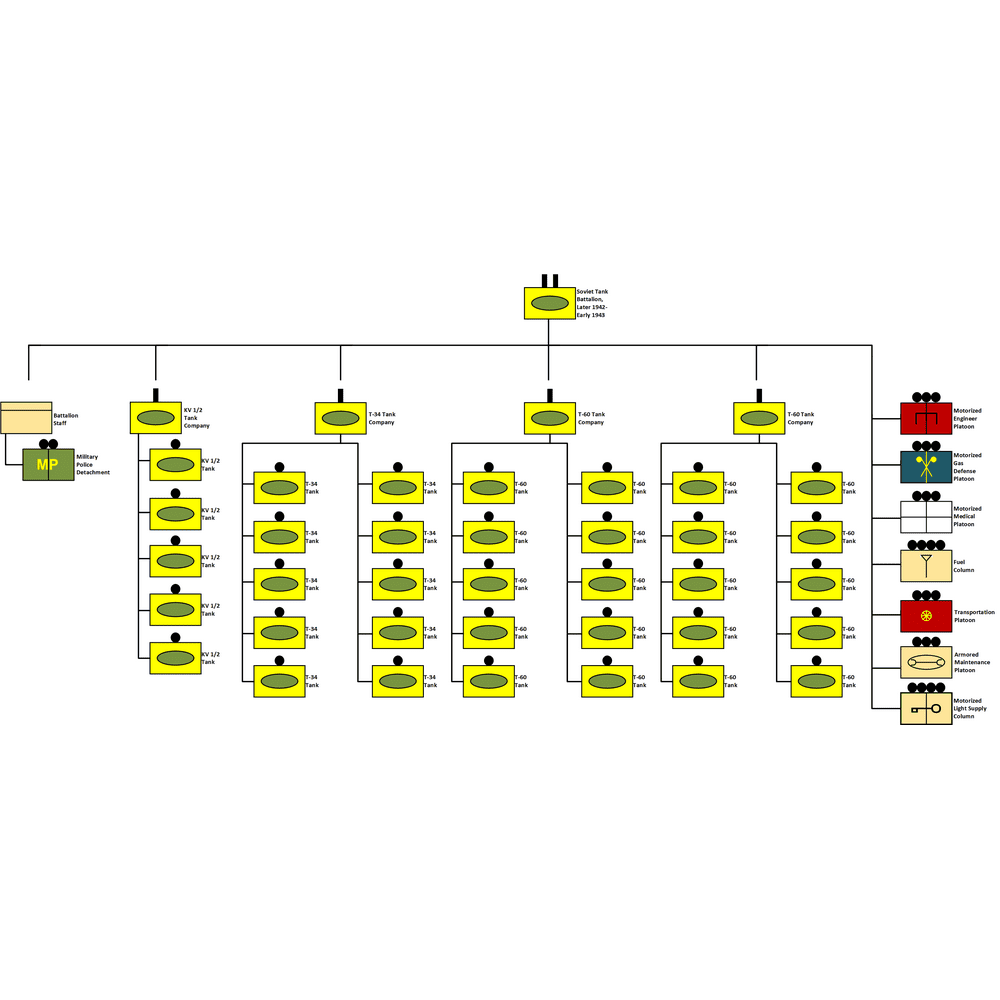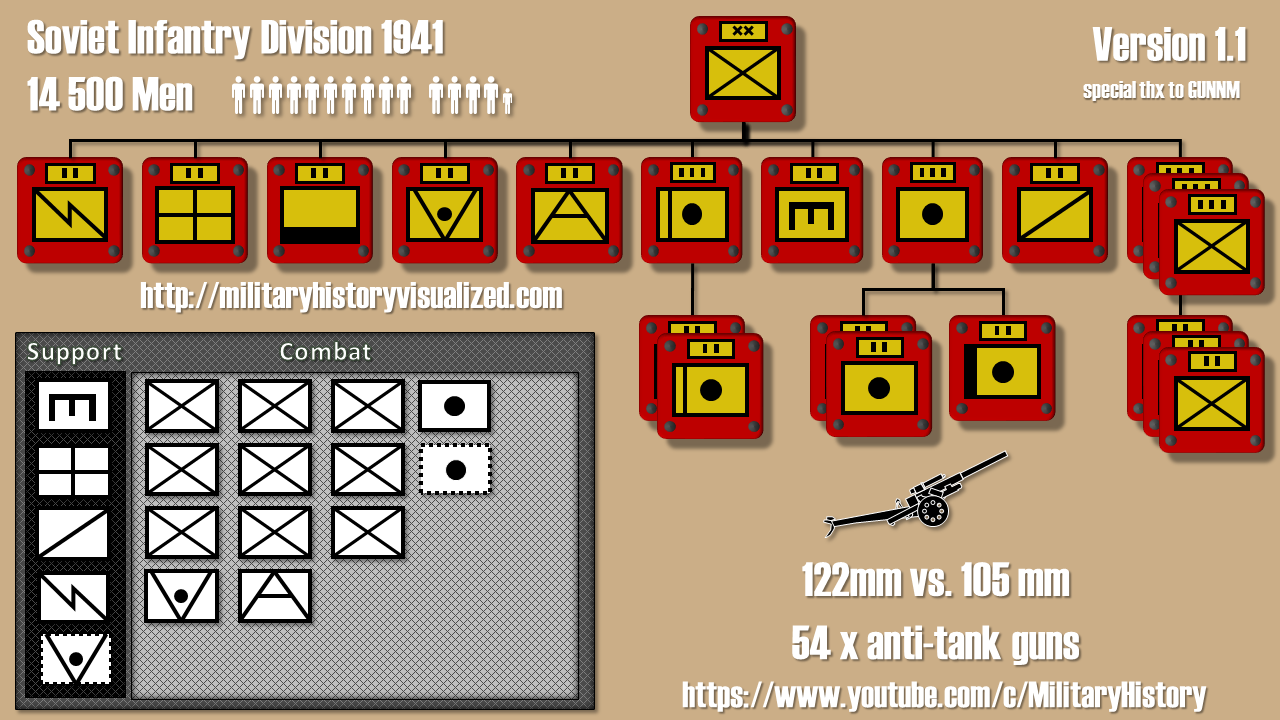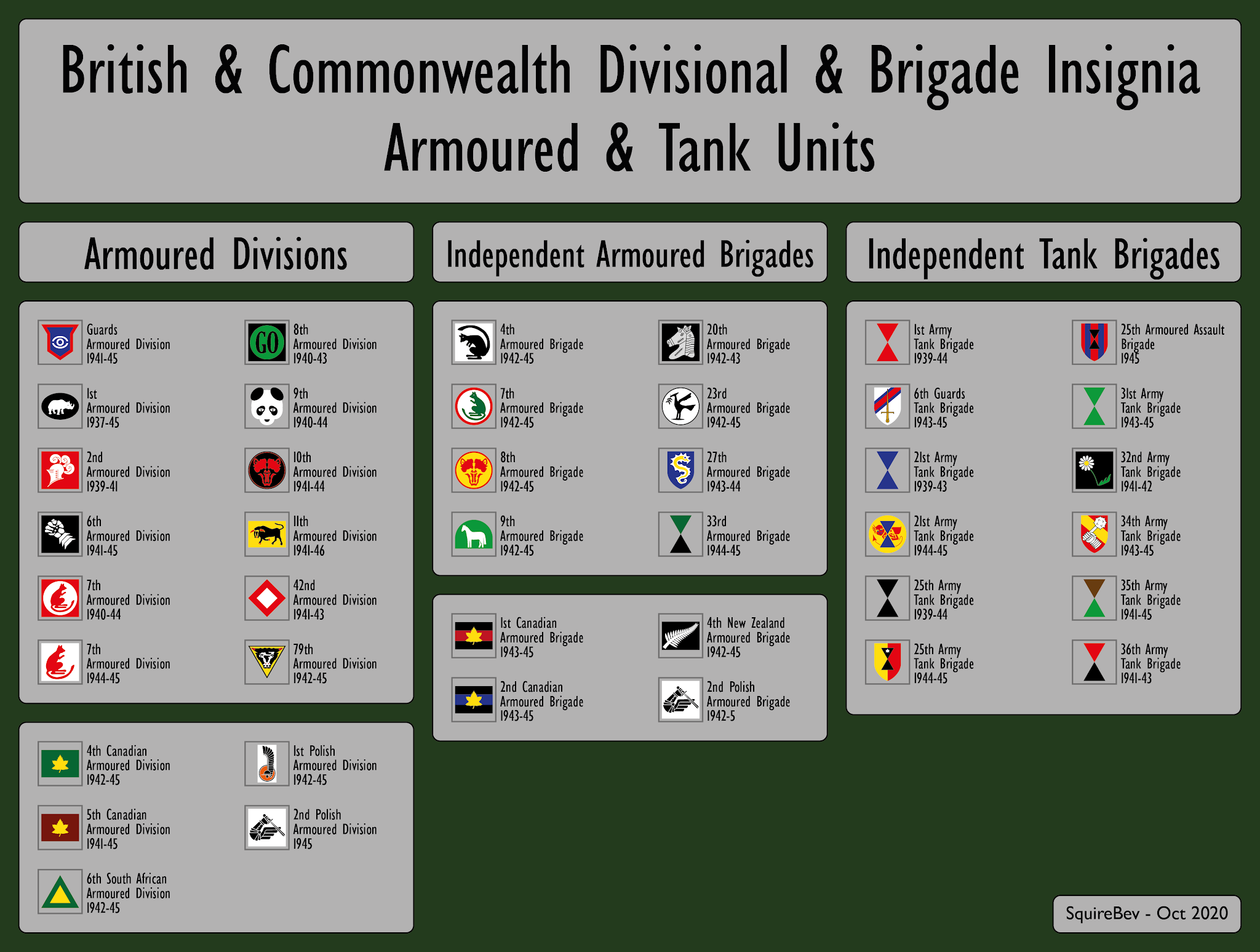
Pin on EUROPE MILITARY & POLICE INSIGNIAS
The Tank Corps was left understaffed and undermanned, with little money or interest being diverted their way in the immediate aftermath of the Great War beyond the Tank Corps being made a permanent part of the British Army in 1923, though limited to only 4 divisions.

British, Canadian, Polish and Czech tank formations in Normandy June to August 1944 and their Markings. The following article is an attempt to gather together the available information on the British, Canadian, and British supplied tank formations that served in Normandy.

British Tank Markings and Names 19141945 PDF
The most effective tank force proved to be the German, composed in 1939 of 3,195 vehicles, including 211 Pz. IVs. What made the German panzers so formidable was that, instead of being divided between various infantry and cavalry tank units, they were all concentrated and used in massed formations in the panzer divisions.The successes of the panzer divisions during the first two years of World.

Pin on war
For the past few weeks I've been working on a guide to British Tank and vehicle markings - particular the arcane system of colours and numbers used for Arm of Service markings. With help from people on other forums and social media I've been able to track down enough sources to come up with a vaguely coherent overview of the systems used.

• View topic US ARMY Organization Military history
Bibliography. Benjamin Coombs, British Tank Production and the War Economy 1939-1945, C Black, 2013. David Fletcher, Sherman Firefly, Bloomsbury, 2012. David Fletcher and Richard C. Harley, Cromwell Cruiser Tank 1942-50, Bloomsbury, 2012. John Stone, The Tank debate: Armour and the Anglo-American Military Tradition, Routledge, 2018. Steven Zaloga, Armoured Champion: The top tanks of World War.

Polish Armoured Division. Military history, Military insignia
1st The Queen's Dragoon Guards Household Cavalry King's Royal Hussars Light Dragoons Queen's Own Yeomanry Queen's Royal Hussars Royal Dragoon Guards Royal Lancers Royal Scots Dragoon Guards Royal Wessex Yeomanry Royal Yeomanry Scottish and North Irish Yeomanry Combat Manoeuvre Centre Bovington Welfare Team WHO WE ARE The Royal Tank Regiment

Later Panzer Divisions East Wwii vehicles, Tanks military, War tank
After the reorganization is complete, the British Army's armored brigades will be a "use-once resource," according to Stuart Crawford, a retired army colonel and 20-year veteran of the Royal.

62 Tank, Fashiontopian Rheinell Military Company Tank Battalion
The black uniformed German panzer crews climbed into their Panther tanks at 10 pm on June 8, 1944. Their objective was the village of Bretteville just west of the key crossroads of Caen opposite the beaches where the British had come ashore on D-Day two days before.

https//flic.kr/p/CTDaB6 7th Armoured Division Cromwell's Photo
British Armoured Divisions and their Commanders 1939- 1945. £25.00 GBP. Written by Richard Doherty The aim of this book is the examine the role of the British armoured divisions during the second world war, assessing performance and achievements. Hardback. Read full description. Add to cart.

Organization of a Soviet Tank Battalion in late 1942 to early 1943
Johno, 22. The Regiments of the Royal Armoured Corps form the core of the British Army's Mounted Close Combat capability. The 10 Regular and 4 Reserve Regiments are descendants of the famous Cavalry Regiments who rode into battle on horseback and of the Royal Tank Regiment, who manned the very first tanks during the Great War (World War 1).

USA. Medium Tank Bttn. 1943 Tanks military, Military armor, Tank
1st Armoured Division (United Kingdom) List of orders of battle for the British 1st Armoured Division 2nd Armoured Division (United Kingdom) 6th Armoured Division (United Kingdom) 7th Armoured Division (United Kingdom) 8th Armoured Division (United Kingdom) 10th Armoured Division (United Kingdom) 11th Armoured Division (United Kingdom)

Update HOI 4 Historical Infantry Division Layouts Early War
The infantry tank was a concept developed by the British and French in the years leading up to the Second World War. Infantry tanks were tanks designed to support the infantry in the attack.

Divisional Insignia Armoured Formations
With attached supporting arms, British brigades more closely resembled American regimental combat teams, with organic armor and artillery battalions. The main British units committed to the 6 June landings were: British Army Divisions: Third Infantry Division Sword Beach, Maj. Gen. T. G. Rennie.

17 Best images about Armoured division insignia on Pinterest Us flags
The main goal of the regular army, largely built around battalion -sized formations, was to police and garrison the British Empire. The basic tactical formation among the major militaries was the division. These were self-contained formations that possessed all the required forces needed for combat.

Pin on Allied Armour of the Second World War
WW2 British tanks and armored cars. The armored divisions, operations, campaigns, tactics, tank design, and innovations of the British Empire. Skip to the content.. Light Mk.VIb, A Sqdn, 1st Battalion Royal Tank Regiment, 7th Armoured Division, Egypt, fall 1940. Light Mk.VIc, Malta, June 1942. This late version, produced until mid-1940, was.

Pin on Tanks
British Expeditionary Force infantry in France, 1940. Courtesy of the Imperial War Museums. In its original conception, the plan was for a combined force under Major General Harold Franklyn, consisting of the British 5th and 50th Divisions, supported by the 1st Army Tank Brigade and some French tank forces, to attack southward from the old WWI battlefields of Vimy Ridge and Arras, while larger.